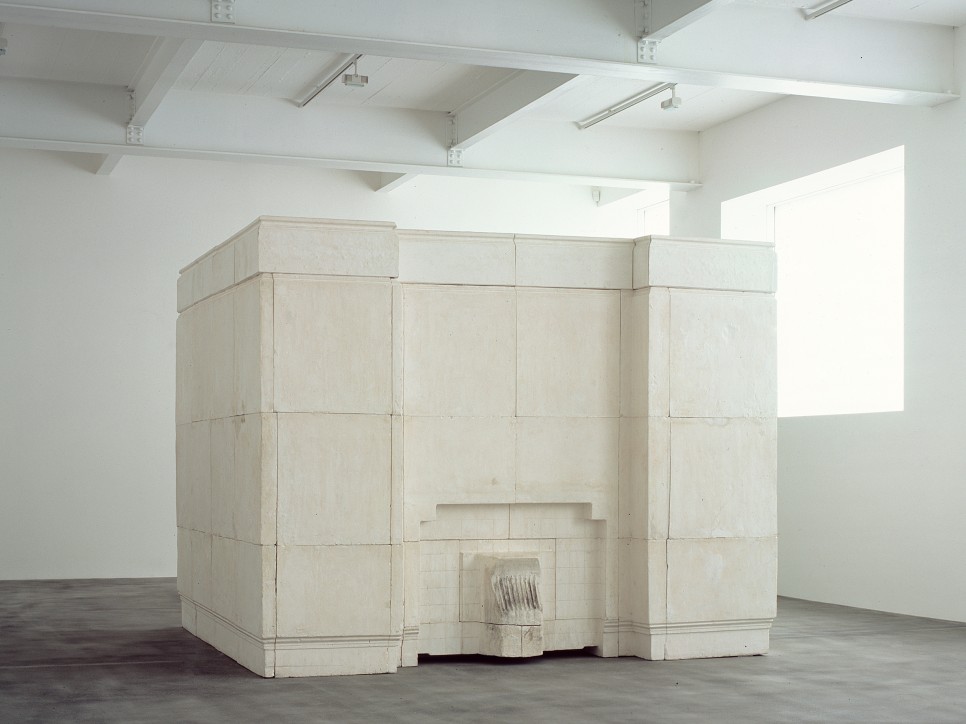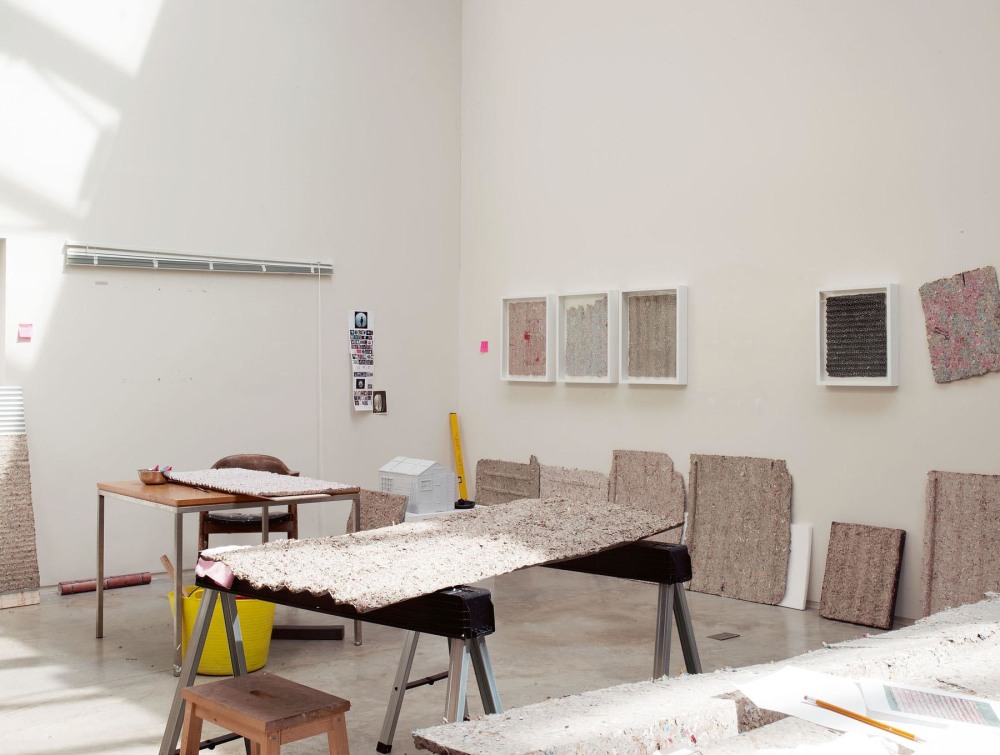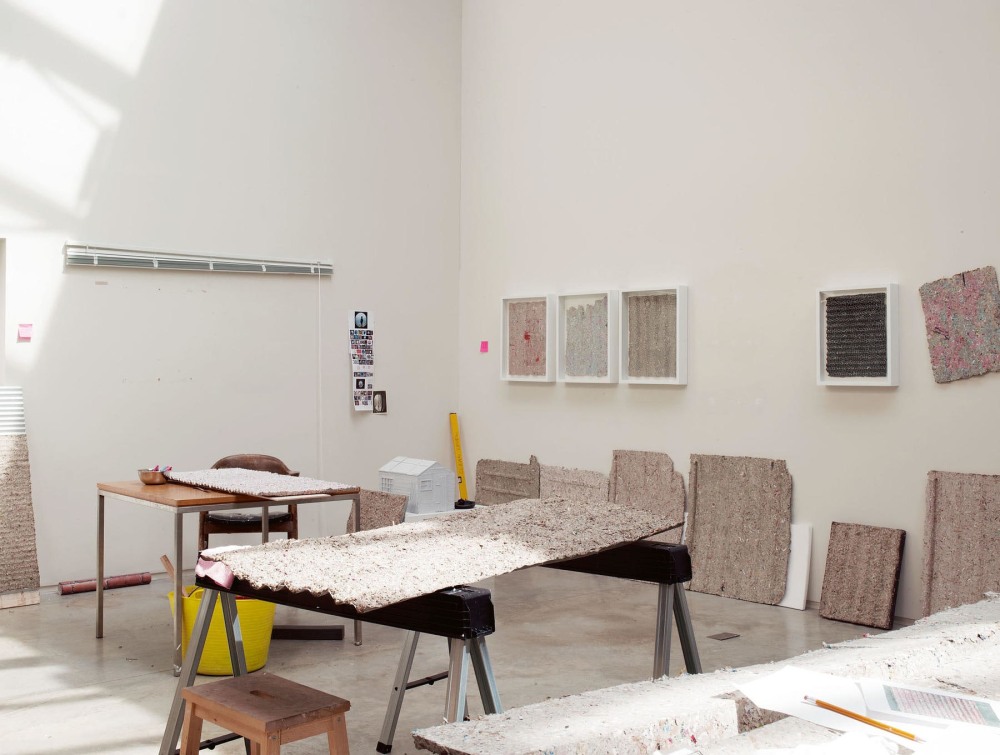

2017. When Rachel moved into her north London studio in 2016, she resolved to rid herself of all unnecessary ephemera. A plan chest of drawings were shredded and turned into papier mâché, some of which she cast on sheets of corrugated iron and had framed.
Everything Rachel Whiteread, CBE, Turner Prize-winning artist, makes is about us: our histories, our lives, our deaths, our absences — cast in concrete. It started with a spoon. Eventually it encompassed a whole house.
At 54, Rachel is working at both scales. Her extraordinary sculptures combine a comforting homeliness with a nightmarish quality. But she is also making quieter “shy sculptures” in remote places. One day she’ll make a map of them. For now, a survey show at Tate Britain plots her work from London’s Archway Road to California’s Joshua Tree National Park. It’s a chance to celebrate the mournful poetry of her monumental take on the world.
When it comes to her art, Rachel Whiteread doesn’t compromise. Rather than see her best-known work, “House” (1993), a life-size cast of a family home in east London, moved from the place it was made for, she allowed it to be destroyed after only 11 weeks, even though she regarded it then – and still does now – as “one of the best things I’ve ever made”. She later endured five years of aggressive questioning to get her design for a memorial to Jewish Holocaust victims in Vienna approved without having to alter it. “I’m just like a bull. If I want to do something, I’ll keep going until it’s done,” she tells me when we meet in her studio in early May. Her “pure bloody-mindedness”, as she describes it, has made her push her body to its limit for the sake of her art. In 1990, when she made “Ghost”, a cast of the living room of an abandoned home at 486 Archway Road in north London, she hauled all the 25-kilogram bags of plaster up the hill to Highgate herself, one by one, on the back of her bicycle. “It was nuts,” she says, recalling the effort required.
Rachel achieved critical success early, aged only 25, with her first solo exhibition at the Carlisle Gallery in London in 1988. Since then she has enjoyed sustained acclaim in Europe, the United States and further afield, a feat few artists manage. Her contemporaries Damien Hirst and Tracey Emin – fellow Young British Artists championed by Charles Saatchi in the 1990s – might be better known today, but their artistic output and reputations have ebbed and flowed over the years. Rachel’s have never wavered; in her 30-year career, there have been no false steps, no embarrassing misjudgements. She was the first woman to win the prestigious Turner Prize, in 1993, and the first female artist – and the youngest person ever – to represent Britain with a solo show at the Venice Biennale in 1997, when she was 34 (taking the prize for “an outstanding achievement by a young artist”).
Read full article at thegentlewoman.co.uk

